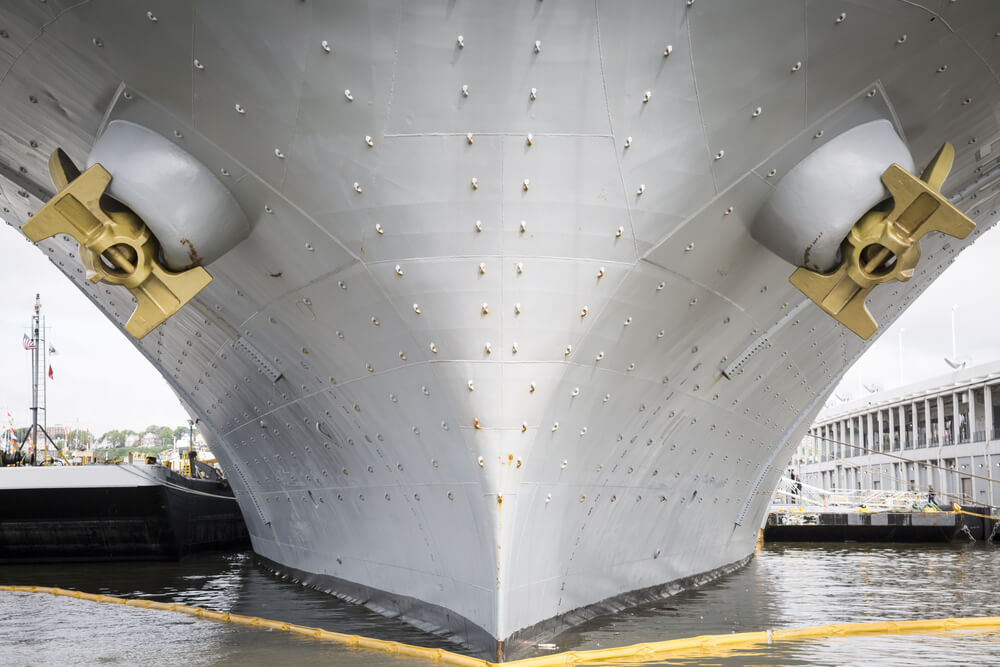Question: What do America’s semi-conductor manufacturers have in common with America’s naval shipyards?
Answer: Both are critical to national security, and both are in danger of falling behind China.
China is building 18 new semi-conductor fabs in 2024. Last year, China churned out 30 navy combat ships while the US delivered 2, according to Sen. Dan Sullivan, R-Alaska, a member of the Senate Armed Services Committee.
The Biden administration has rightly made advanced semi-conductor manufacturing a strategic priority via the Creating Helpful Incentives to Produce Semiconductors (CHIPS) and Science Act of 2022. In March, President Joe Biden announced up to $8.5 billion in direct funding, along with $11 billion in loans under the CHIPS and Science Act for Intel’s Ocotillo campus in Chandler, Arizona.
That’s commitment. But while the Biden administration is moving fast on chips, combat ships are in big trouble.
The fiscal year 2025 Navy budget had to delay buys of new aircraft carriers, submarines and surface combat ships. The new Constellation-class frigates are three years behind. “In the era of great power competition, we are being outpaced significantly by China,” said Jim Kenny, vice president of Navy affairs for Fairbanks Morse Defense.
What terrible timing. According to the Congressional Budget Office, U.S. Navy ship totals at 290 will decline for 10 years before trending upwards again. In comparison, China’s navy lists about 340 ships, and it will grow to 440 by 2030. Just last week, China sent their newest aircraft carrier on sea trials while other Chinese ships assaulted Philippine navy vessels with water cannons.
U.S. Navy is needed on patrol globally
This is no time to accept a pause in naval power. The U.S. Navy is desperately needed around the globe. Unfortunately, the problem has been brewing for well over a decade.
Consider the tale of the amphibious ship LSD-44 USS Gunston Hall.
Last month, the USS Gunston Hall embarked French marines, hooked cargo to Italian navy helicopters, opened the well deck for Swedish CB-90 fast assault watercraft in the seas of the High North and carried out amphibious assault training in the fjords of Norway. It was all part of the massive NATO Steadfast Defender exercises involving over 50 allied ships and showcasing NATO’s ability to move forces rapidly around Europe to counter Russian threats.
Too bad the shipyard where she was built has been closed for 10 years.
The USS Gunston Hall was one of the last Navy ships produced by Avondale in Louisiana. Her keel was laid in 1986. Avondale was once the state’s biggest employer. Wavering Navy budgets in the sequestration years led to the closure of Avondale in 2014.
“Avondale is remembered as an oasis of well-paying blue-collar, working class jobs for thousands of residents of New Orleans,” a local paper wrote in 2014.
“It was a place where you could be a middle-class worker and play a role in the community,” former shipyard worker Andrew Croome said at the time. “I’d get real attached to whatever ship I was working on,” he said. “You always got a little sad when you saw it moving down the river without you.” Croome was laid off in 2013 at age 61, while serving as president of the New Orleans Metal Trades Council.
Shipbuilding always had its boom or bust cycles. But in the 2010s, Washington was too slow to catch on to China’s threat, and it lost sight of the need to sustain the shipyard industrial base.
Budget and strategy decisions in Washington have driven the shipbuilders to this crisis point. No doubt the admirals are frustrated too. At this point, it will take decisive and drastic measures to hold onto naval shipbuilding power.
An approach for reversing U.S. shipyard decline
Congress has some serious choices to make. And as the debate unfolds, here are four suggestions for restoring a national asset.
Invest. Congress invested $1.7 billion in shipyards in Louisiana and Mississippi after Hurricane Katrina in 2005, directed $100 million to small shipyards as part of the 2009 recovery after the financial crisis and gave a Florida shipyard relief following Hurricane Michael in 2018. It is far too late to do this on the cheap. It will take several billion dollars in emergency appropriations to bring back capacity. For this, too, there is precedent, even beyond the chip fabs. In the 2016 budget, Defense Secretary Ash Carter added $5.5 billion for space surveillance and protection due to the threat from Russia and China.
Buy 100 new ships. China tripled the size of its navy with aggressive investment over three decades. The U.S. goal is modest by comparison, to grow to about 350 ships in the 2040s, while also building approximately 150 unmanned vessels. We can and must do better. For simplicity’s sake, set a goal of 100 more Navy ships in 10 years and procure the unmanned vessels too. No more color glossy modernization pamphlets. Just make it: 100 ships.
Commit to America. Navy Secretary Carlos del Toro is talking to South Korea and Japan, allies who both have big commercial shipbuilding industries. That day may come, but the first step should be to activate every shipbuilding resource here at home.
Why not move work from maxed out shipyards to suppliers that have the space and workforce capacity to surge? Virginia, Mississippi, Connecticut, California, Louisiana, Maine and Alabama are among the biggest shipyard employers, but nearly all states on the coasts (East, West and Gulf of Mexico) or the Great Lakes and the Mississippi River have active shipyards. Perhaps they can take on additional work on modules and assemblies that take place before final construction and outfitting. Shipbuilding is a team effort, with more than 2,000 companies in 44 states contributing to the construction of Ford-class carriers. Many of those companies likely can help with the workflow.
Prioritize the workforce. Hiring and retaining skilled workers is job one. This will take multi-year contracts. A sustained investment in American shipbuilding would give both big shipyards and their suppliers the stability to attract new hires and train them for long careers
Obviously, this approach is going to mean spending money. But it will cost less than leaving freedom of the seas to the whims of China.







